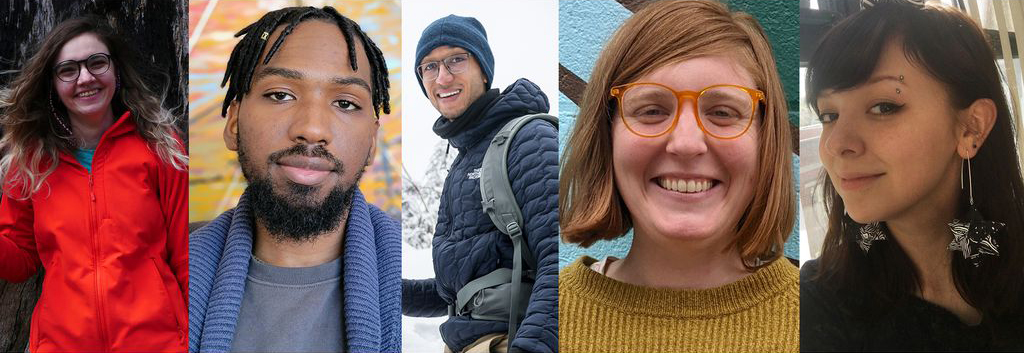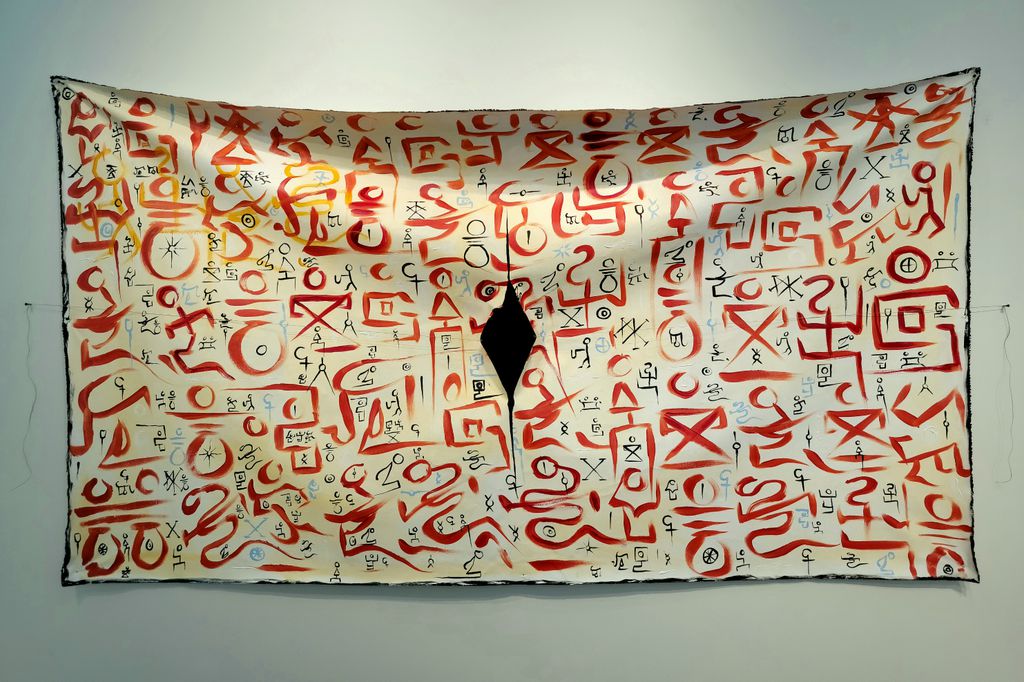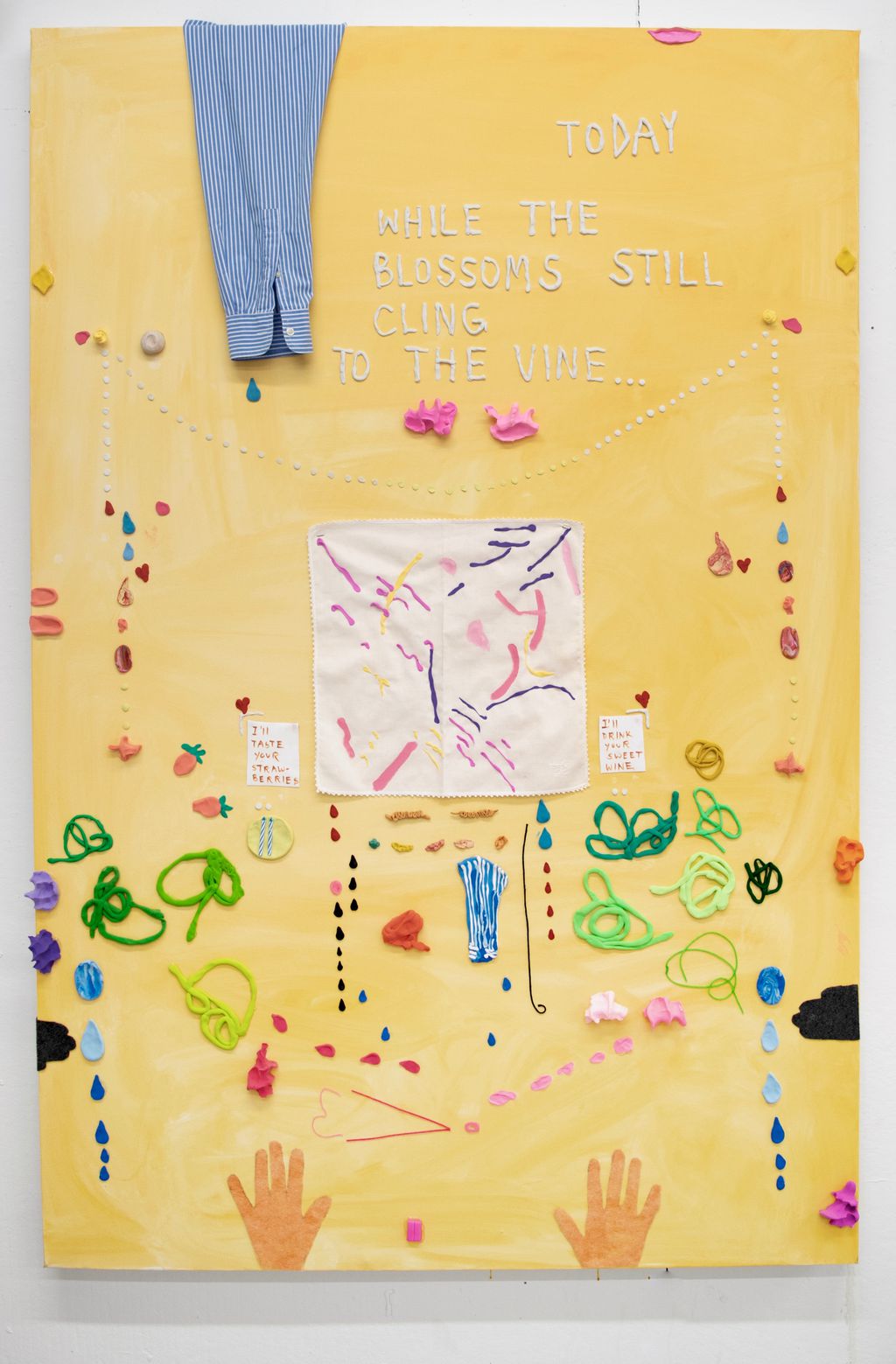Boston Globe feature: 5 art-school grads to watch for 2021

This article was first published in The Boston Globe on May 5, 2021. By Cate McQuaid
EXCERPT
Students fresh out of art school often shake up old ideas. If there’s a trend in this year’s group of up-and-coming Master of Fine Arts graduates (from Boston University, the School of the Museum of Fine Arts at Tufts University, Massachusetts College of Art and Design, and University of Massachusetts Dartmouth), it’s about subjectivity. That is, the interior experience of any being — how it is shaped by society and still full of mysteries. Who am I? Who are you? Does a place have a self? Does the universe?
Mosheh Tucker
Painter, Boston University
Tucker’s mother is from Haiti and his father is from Mississippi. He grew up in Boston, not sure where he was from.
“My identity is a gray area,” he said.
His paintings explore the vast gray areas generated by the slave trade. He devised pictographic scripts using vévés — symbols of Haitian Vodou spirits — rooted in an ancient West African graphic written language.
“Untitled (The Poem),” alive with pictographs, translates Tucker’s poem about a mother and child who jump from a slave ship and drown. A tear in the middle reveals black backing.
“It’s generalized Black identity,” Tucker said. “Once I’m outside the spaces where I’m known, I’m this general thing, Black. I’m this non-white thing.”

The pictographs invoke gods, stories, and bodies. In Vodou rituals, vévés are drawn on the ground and erased by dance. With paint, Tucker makes them permanent.
“Vévés are portals. They allow the spirit to come into your space. Dancing clears the space. I’m opening but not closing the portal,” he said.
He wants to hold the gods accountable.
“I think about the gods symbolically. But through slavery, bondage, and torture, they just watched,” Tucker said. “I pull them into this space. They don’t go.”
Find more: moshehtucker.com, instagram.com/the.artist.mosheh
Bridget Bailey
Painter, Boston University
It’s no surprise that Bailey once taught kindergarten. Her painting practice echoes the way children discover the world, and themselves, through bodily experience. The works are tactile, sweet, and funny. They consider what it means to be queer, opting not to be penned in by categories.
She works with materials she likes to touch.
“I’m a physical painter,” said Bailey, who is from Nashville. “You’d think that would have me moving around a lot of oil paint, but I’m interested in zeroing in on the physicality of nontraditional but relatable materials.”

That includes children’s crafts such as Sculpey, which she squishes and bakes, then affixes to her canvas. Then, chewing gum in “Today,” which harks back to feminist painter Hannah Wilke’s use of gum. Bailey’s influences also include British painter Tracy Emin and riot grrrl singer Kathleen Hanna. “I like their edgy, angsty girl vibe,” Bailey said.
But familiarity and idiosyncrasy are stronger in these works than angst. The sleeve that hangs down from the upper edge of “Today” recalls one of her favorite shirts.
“I see clothes as comfort objects,” said Bailey.
And her painting? “It’s about being comfortable,” she said, “in terms of queerness and presentation of self.”
Find more: bridgetmbailey.com
PAINTING MFA AT CFA
The Master of Fine Arts (MFA) program in Painting at Boston University promotes the discipline in its varied manifestations as a fundamental form of artistic expression. At its core, the program is studio-driven, with rigorous expectations about each student’s commitment to their own artistic practice. As an art form, painting is more than just an activity; it is a long-term critical engagement with ideas, feelings, and sensibilities. As such, the program supplements this emphasis on the studio with critical dialogue, in the form of studio visits, critiques, weekly seminars, lectures, field trips, and workshops.
Graduate students develop close working relationships with both faculty and peers, forging a tight-knit community that continues beyond graduation. Frequent visits from major figures in the contemporary art world, as well as regular trips within New England, New York City, and beyond, bolster this sense of community and prepare students for a life in painting. Real world experience, critical dialogue, and an intensive studio climate support each student’s journey toward an ever-sharpening artistic vision.